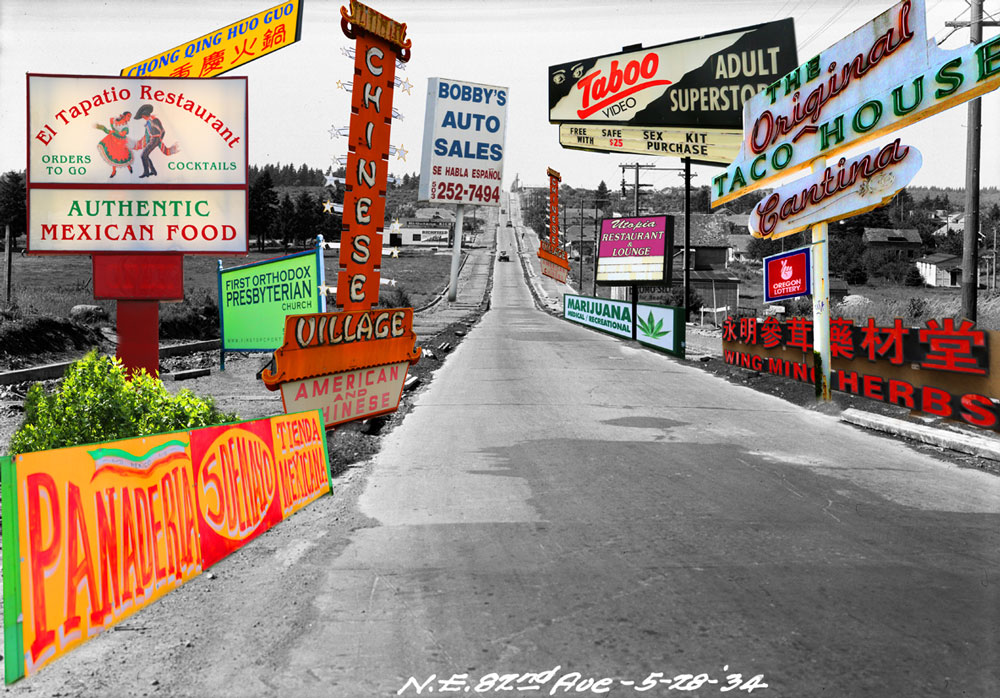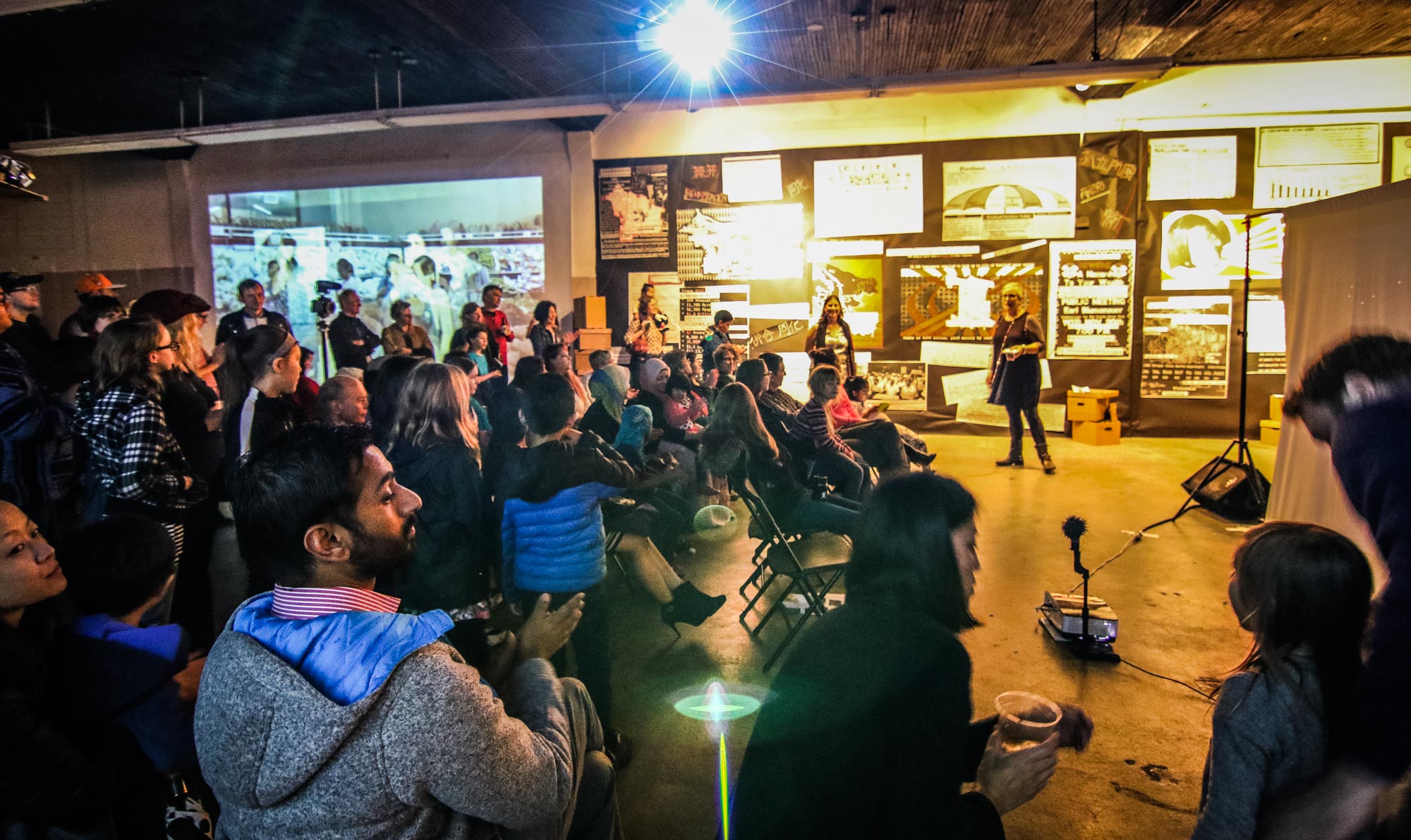
ProgramRACC is a local arts agency serving the Portland, OR metro region. It manages the Percent for Art program for the City of Portland and Multnomah County. In 2000, it expanded its Percent for Art program to support M/A partnerships. To this end, it established intersections, a public art residency program that supports artists in all disciplines to explore new working methods and develop socially engaging, interactive art experiences in community settings through partnership with municipal agencies. Participating agencies have included: City of Portland Archives & Records Center, Portland Fire Bureau, the Multnomah County Department of Community Justice, and the County Health Department. ProjectsResidencies at Portland Archives & Records Center When $170,000 in Percent for Art funds (2% of a construction project budget) became available to the Portland City Archives and Records Center (PARC), City Archivist Diana Banning suggested an artist in residence “to open up the archives to people other than the archive’s traditional users, to reach out to the community, and to view the archives through a different lens. …seeing how artists interpret materials will bring a new perspective.” (Kathy Carbone, Archivaria, Spring 2015) Banning also pragmatically saw this approach as a new way to deepen the agency’s relevance to the Portland community.
Banning and Director of Public Art Kristin Calhoun determined that $50,000 of the funds would fund a public artwork for PARC’s reading room and the balance would support several artist residencies between $10,000 and $20,000. PARC has had three artists-in-residence since 2012, who brought a new dimension to the Archives’ trove of historical records. Artists have creatively addressed the role archives play within society and the implications of gaps in the official record through their community-focused work. One of PARC’s intersections residencies was with artist Sabina Haque. She created Annexation & Assimilation: Exploring the Archive East of 82 Ave in response to PARC’s interest in excavating the history of exclusion and inclusion in East Portland, an underserved area of the city that was annexed in the 1980s through a tumultuous process. PARC’s historical documentation of this part of the city is limited. Archivists hoped to work with an artist interested in taking on the question: What do you do when a community’s history isn’t well documented? What does it mean for a community to be annexed? Haque’s residency was a way to make this history public. Haque collaborated with neighborhood residents, recording oral histories about the annexation and how the neighborhood’s identity has evolved over the last 35 years. Using archival sources, contemporary images, and theater workshops, the artist created a first-voice portrait of East Portland communities. At the end of Haque’s residency, she mounted an exhibition in East Portland that featured hand-drawn animations, posters, and videos of residents talking about the neighborhood. The project gave a more multidimensional understanding of the annexation issue and its effects. Instigatorintersections evolved naturally to focus on public art that embraces social engagement. RACC’s 1998 partnership with the Office of Juvenile Justice and Americans for the Arts created the Youth Arts: Arts Programs for Youth-at-Risk Tool Kit, which deepened its understanding of arts partnering with government agencies. Through Youth Arts Public Art, RACC created a series of five artist residencies. Following the success of the Juvenile Justice residency, Director of Public Art Kristen Calhoun saw that, “connecting an artist to work within a particular department was going to serve the broader goals of the Percent for Art program and the goals of the department, hence the name intersections.” Partnership Structureintersections is a great example of how the Percent for Art model can expand beyond capital projects, to support artists, address the needs of municipal and county agencies, and create positive community impact. RACC, now an independent non-profit, was formerly part of Portland City government so they deeply understand how municipalities work and the challenges agency staff confront. RACC oversees the Percent for Art program, and works as a valued third-party partner on behalf of both artists and municipalities. RACC performs key functions in this relationship, which include:

Fundingintersections is funded through Percent for Art allocations which are required to include art in qualifying municipal construction or renovation projects. RACC holds and administers the funding, and negotiates the project budget with each municipal agency. RACC gives the agency the choice of working with an intersections artist in residence, or to work through a conventional commissioning process for artwork. While Percent for Art commissions are tied to a specific building project; the intersections program allows use of funds at a completely different site. Impact and OutcomesOn Portland Archives and Records Center (PARC) partners
On community
“The experiential approach to public art can have a long life in people’s hearts and minds.” Kristin Calhoun, RACC
On city government
On the field
Success Factors
Lessons LearnedWith each successive artist residency, PARC has learned to be clearer in articulating agency interests related to both community goals and aspects of the archive's collections they wish to focus on. RACC continues to guide PARC away from asserting too much direction to the artist and letting them “do what they’re going to do.” |